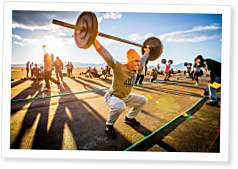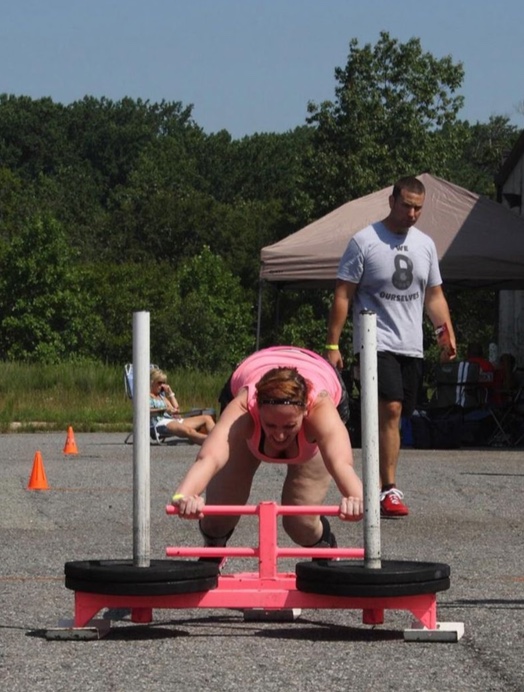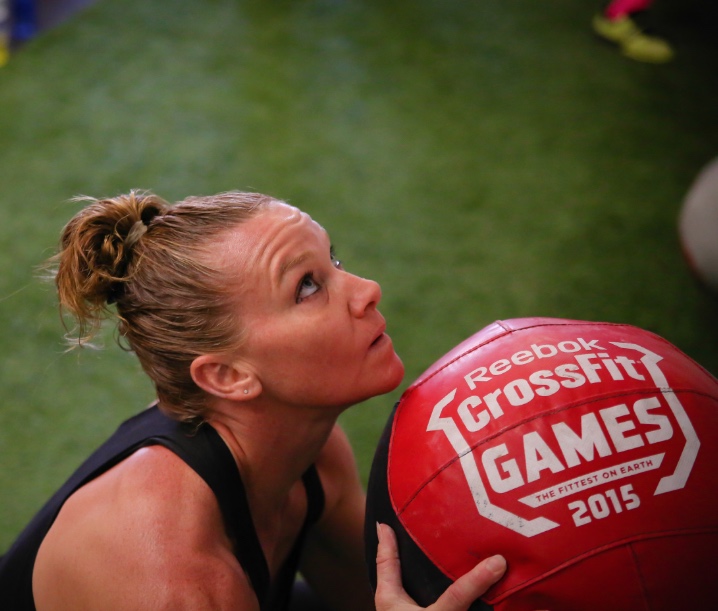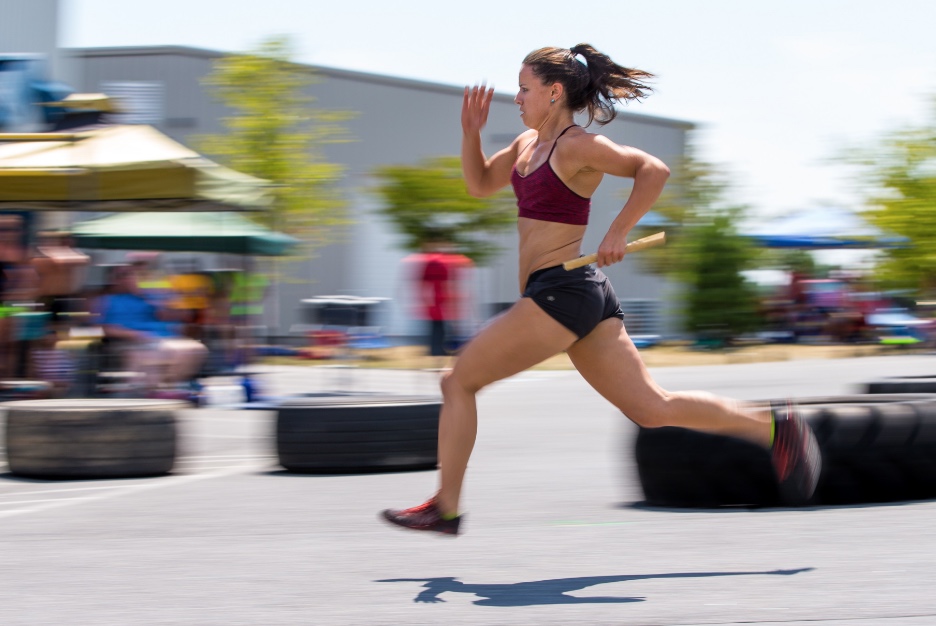
If you determine the size of the field before programming the events, you might be putting the collars on before the plates.
“I’ve got 100 athletes, 10 solid judges, 5,000 square feet and nine hours to run as many events as I can.”
How many organizers have said something like that when planning a fitness competition?
I’d suggest what they’ve really got is a programming nightmare.
Local Limits
One of the best parts of the CrossFit Games is that organizers have the freedom to do just about anything they want. Within reason, Dave Castro and the Games team are free from concerns about space, judges, equipment, scheduling and other issues that are front and center when programming a competition at the affiliate level. The Games certainly have some limits, but the boundaries are hazy fences near the horizon and leave a lot of room for creativity when finding the Fittest on Earth.
On the other hand, local fitness competitions are often hamstrung by a host of factors, though some larger multi-day events are less encumbered. Of course, the mandate of these events is not to find the fittest athlete on Earth; that’s the job of the CrossFit Games alone. But these local throwdowns are often intended to find the fittest person who competes, yet their format won’t actually allow them to do so.
A question: How many people have programmed a competition and chosen a max snatch over a max clean and jerk simply because less plates are involved?
Another question: How many competitions feature four or five events all in the same short time domain simply because longer events eat up too much of the day?
A final question: How many competition organizers ask “how can I accommodate the most athletes?” as opposed to “how many athletes can I accommodate while still finding the fittest person?”
 Got gear? If you only have two sleds, you can only run two heats at a time.
Got gear? If you only have two sleds, you can only run two heats at a time.
The All-Too-Common Scenario
Consider this: 100 athletes in a one-day competition starting at 8 a.m. Ignore for the moment space, judge, volunteer and equipment concerns.
If each heat of Event 1 takes seven minutes plus three minutes of transition time, you can run six heats an hour. You’ve got 100 athletes, and you can accommodate a maximum of 10 at a time. That’s 10 heats, putting you at 9:40 a.m., plus about 30 minutes of scoring catch-up and set-up/warm-up time for Event 2.
With the seven-minute time domain covered, Event 2, starting at 10:10 a.m., tests endurance—something in the 18-minute range, leaving two minutes between heats so you can run three per hour. That means you’ve got three hours, 20 minutes of competition if you run 10 athletes per heat. Suddenly it’s 1:30 p.m. Skip lunch and add in another 30 minutes for transition, bringing you to 2 p.m.
At this point, let’s say you want to test strength with squats. On the verge of rushing, you decide on a very brisk five minutes for each athlete to establish a 5-rep max, which limits the weight you’ll need. Ten athletes per heat with a minute between heats gives you 10 in an hour, driving the end of Event 3 somewhere near 3 p.m., with the next event starting at 3:30.
This is where things can get weird. Organizers often seek to avoid running into the evening by cutting the field substantially or serving all athletes a second event in the seven-to-10-minute time domain. The former approach usually creates scoring issues, and the latter often produces a redundant event that will still take the competition past 5 p.m.
You can, of course, start earlier or run later, but after nine to 10 hours spent in the gym, it’s usually time to hand out some prizes and set the competitors loose on the kind of post-event cheat meals that demand total coverage on Facebook and Instagram.
 While resources are plentiful and don’t limit programming at the CrossFit Games, a simple shortage of medicine balls can force programmers to change events at the local level.
While resources are plentiful and don’t limit programming at the CrossFit Games, a simple shortage of medicine balls can force programmers to change events at the local level.
Reverse-Engineering Your Competition
Recall that in the above scenario we only considered time and assumed you had enough space and equipment, lots of great judges, and an army of volunteers who need only coffee and not lunch. We also ignored the need for scaling between divisions, weather concerns, crowd management and all the other issues that come up when trying to run a great competition.
You could try to solve the scheduling problem by adding a second day of competition or starting earlier and running later. But those solutions come with obvious drawbacks: A second day will eat up an entire weekend and a very long day is hard on both competitors and event staff.
To make the event work, organizers often commit a critical error by foregoing real tests of fitness in favor of crowd control in a gym that looks like a high-density cattle farm. “Work capacity over broad time and modal domains” becomes “work capacity over short time domains involving modalities dictated by space and equipment concerns”—far from ideal if you’re trying to determine the fittest person in the competition.
That’s not to criticize local competitions but rather to point out some inherent limitations and offer a possible solution.
 Running is a great test of fitness, but planning a route for competitors can be very tricky.
Running is a great test of fitness, but planning a route for competitors can be very tricky.
All too often, I think competitions are set up to accommodate too many athletes, which is noble but ultimately impractical. In other cases, the number of athletes is determined by a desire to hit a certain profit margin: athletes x registration fee - costs = profit.
In either case, I think you’re setting yourself up for failure. I’d rather see a two-event competition that features just Cindy and Grace instead of a five-event competition in which the same person wins all events simply because they’re all relatively light and about five minutes long.
Here’s my recommendation: In the very early stages of planning a competition, program the events so they accomplish your goal. If that goal is finding the fittest—and I think it should be—then you have to measure work capacity across broad time and modal domains. You need to test strength, power, endurance, skill and more with various implements and movements in events that run from very short (think Fran) to relatively long (think Cindy or longer).
Keeping your goal in mind, program the best events you can while holding space, time, equipment and volunteer concerns in check for a moment. They’ll play a role in your planning, but they shouldn’t be the overriding concern at the outset. The main goal is creating a well-programmed event that tests overall fitness in one day—your “perfect competition.”
Once you’ve got what you believe to be a solid test of fitness, do the math on time, equipment and space and determine how many athletes you can reasonably accommodate. From there, figure out what you want to gross, divide by the athletes you can accommodate and set the price for entry. Remember: People will pay more for things that are better, and a great competition should cost more than a poorly planned event.
If the entry fees your calculations dictate are well above market value and turn athletes away, you might consider adjusting a too-aggressive profit margin and lowering the prices slightly so they create value for the competitor. I suspect many gyms use their own space and equipment and enjoy a lot of volunteer support, which keeps overhead low and sets up a high-margin windfall. It’s easy to get greedy in that situation and add in 10 more competitors when you should actually remove 10 spots to preserve the intent of the competition.
If you can float the boat with a reasonable entry fee, go forth and run the best fitness competition ever seen in your area—the kind of event that justifies its price and lures competitors back again next year.
If you can’t make the financial nut and feel tempted to mess with the workouts to accommodate more athletes, explore other options. Can you find more space or equipment somewhere? Is it feasible to add another day? And so on.
But don’t touch the programming. That should be off limits.
If you waver and start to feel like a rainbow sea of Nanos will trample your well-considered workouts into five five-minute burners that don’t actually test overall fitness, think long and hard about whether it’s worth running the “fitness competition” in the first place.
About the Author: Mike Warkentin is the managing editor of the CrossFit Journal and the founder of CrossFit 204.
Photo credits (in order): Matthew Tanner, Michael Frazier, Tai Randall
No comments:
Post a Comment